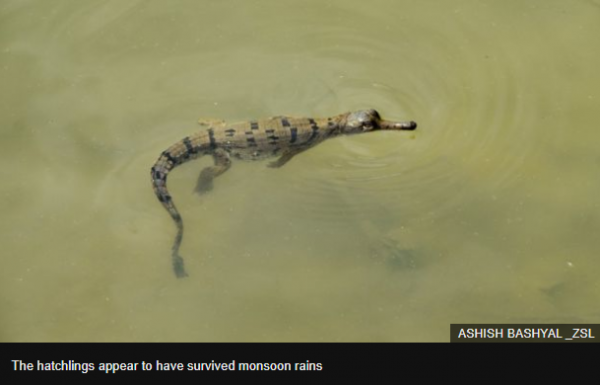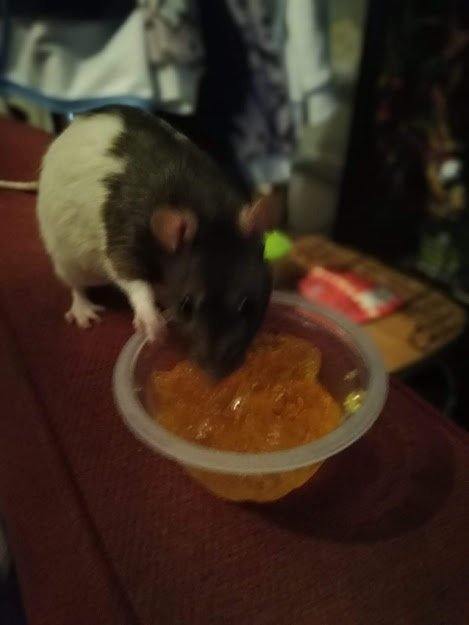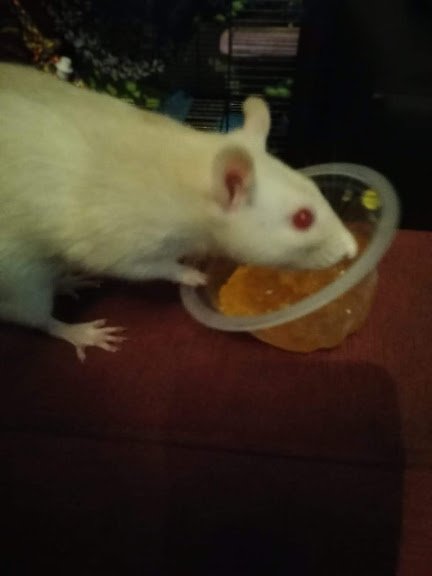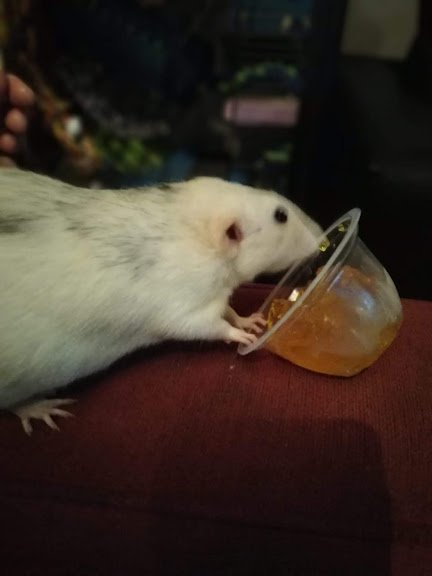-
Posts
20,847 -
Joined
-
Last visited
-
Days Won
49
Everything posted by CaaC (John)
-
-
Mark Sampson: Stevenage caretaker charged with using racist language by FA Stevenage caretaker boss Mark Sampson has been charged with using racist language by the Football Association. The ex-England Women manager, 37, had been subject to an FA investigation since September after an allegation by a former coach at the League Two club. At the time Stevenage said the allegations had "no foundation". Sampson was sacked by England in 2017 after evidence of "inappropriate and unacceptable" behaviour with female players in a previous role. Before his dismissal, Sampson had that year been cleared of wrongdoing following discrimination allegations made by England players, including then Chelsea and Lionesses striker Eniola Aluko. The FA then apologised to Aluko and England team-mate Drew Spence for Sampson's racially discriminatory remarks after an independent barrister ruled he made unacceptable "ill-judged attempts at humour" on two occasions. In January the FA reached a settlement with Sampson after an unfair dismissal case. Former Bristol Academy boss Sampson has been charged with an "aggravated breach" of FA rule E3 and has until 6 December to respond. According to PA Media, it is alleged the remark was aimed at a player during a conversation about transfer targets. Sampson replaced Dino Maamria at Stevenage in September, with club chairman Phil Wallace backing him to become their permanent manager despite the Hertfordshire side being bottom of the fourth tier. https://www.bbc.co.uk/sport/football/50489424
-
New hope for one of world's most endangered reptiles Baby crocodiles found living in a remote region of Nepal give hope for the future of one of the rarest and strangest reptiles on earth. With its distinctive long thin snout, the gharial is unique but critically endangered, with fewer than a thousand adults remaining in the wild. The discovery of 100 hatchlings is a boost for the potential recovery of the species, according to scientists. The crocodile is clinging to survival in India, Nepal and Bangladesh. Revealing details of the find, researcher Rikki Gumbs of ZSL (Zoological Society of London) said it was amazing to find the baby crocodiles basking on a sandbank in Bardia National Park. "Given the species is limited to around five populations across its entire range, this is such a positive discovery, and a critical step for the long-term recovery of the species in Nepal," he said. "After trekking through the jungle for hours to sit on a ridge and finally catch a glimpse of the hatchlings below us - it was an incredible moment to capture," said Ashish Bashyal, who leads the conservation project in Nepal. "At around 30cm in size, they look exactly like miniature versions of adult gharials - so incredibly cute," he said. 'Extinction risk' to sharks and rays Rare sharks found living off Wales The snail that 'came back from the dead'. The 100 baby crocs, together with three adult females and one adult male, were discovered in June, but details are only now being revealed to aid conservation efforts. The crocodile has not been sighted in the area in 30 years. There is encouraging news in that the hatchlings have recently been spotted again after the monsoon rain. "They've made it through the first big hurdle," Rikki Gumbs told BBC News. "Especially with the threats that are impacting the species, it's very important that these hatchlings can make it to adulthood." Once present across much of the Indian subcontinent, the gharial (Gavialis gangeticus) is virtually extinct across much of its former range, with fewer than 100 adult crocodiles remaining in Nepal and several fragmented populations in India. Only one other breeding population is known in Nepal, at Chitwan National Park. The crocodile poses little danger to humans. Hunting and egg collection are now prohibited, but severe pressures remain, including loss of habitat due to the construction of dams, as well as pollution, fishing, agriculture and predation from another species of crocodile found in Nepal. Adult gharials are large, with males reaching over 5 metres in length and 250kg in weight. Males develop a lump on the end of their snouts, known as a gharas, which gives the species its name. The gharial is ranked at number 17 on ZSL's EDGE (Evolutionary Distinct and Globally Endangered) of Existence programme Reptiles list. https://www.bbc.co.uk/news/science-environment-50464471
-
Supernova 1987A: 'Blob' hides long-sought remnant from star blast Scientists believe they've finally tracked down the dead remnant from Supernova 1987A - one of their favourite star explosions. Astronomers knew the object must exist but had always struggled to identify its location because of a shroud of obscuring dust. Now, a UK-led team thinks the remnant's hiding place can be pinpointed from the way it's been heating up that dust. The researchers refer to the area of interest as "the blob". "It's so much hotter than its surroundings, the blob needs some explanation. It really stands out from its neighbouring dust clumps," Prof Haley Gomez from Cardiff University told BBC News. "We think it's being heated by the hot neutron star created in the supernova." Attenborough: World 'changing habits' on plastic New hope for trees affected by ash dieback Geologist blasts society's links with oil firms When telescopes first spotted the explosion in 1987, it caused huge excitement. Sited in the Large Magellanic Cloud, some 168,000 light-years from Earth - the blast was the nearest, brightest supernova seen in the night sky in 400 years. As such, it's become the test case for what we think we know about stars when their fuel runs out and they suffer a cataclysmic collapse. Three decades on, astronomers routinely observe Supernova 1987A and its constantly developing form. It is a thing of beauty - a series of bright rings that represent bands of gas and dust thrown out by the star in its dying phases and which have since been excited by the expanding shockwaves emitted in the end-moment explosion. One of these rings looks like a string of pearls, and it's at the centre of this celestial jewellery that the scientists reckon they've now located the star remnant. It should be a dense object composed entirely of neutron particles and measuring just a few tens of kilometres across. The thick cloud of dust in which it sits, however, is perhaps 30 times the size of our Solar System and this makes the neutron star impossible to see directly. "We see the recycled light if you like. The hot neutron star heats the dust grains and as they absorb that energy - they shine at sub-millimetre wavelengths. That's what we detect," explained Prof Gomez. The team has been probing the area of interest using data from Europe's now-defunct Herschel space telescope and the international Atacama Large Millimeter Array (Alma) facility in Chile. What Alma in particular reveals is that the blob also resides in a region deficient in carbon monoxide (CO) molecules. The CO is being destroyed, presumably in the same heating process that's making the dust shine. Unfortunately, it's difficult to be more descriptive about the neutron star because of its dust shroud, but the group expects this to change with time. "In maybe 50 to 100 years - the dust should clear to reveal this hot, energetic neutron star that everyone's been searching for for 30 years," Prof Gomez told BBC News. Astronomers are interested in supernovas because they are integral to the evolution of the Universe. The explosions stir up the environment, nudging nearby gas clouds to gravitationally fall in on themselves and birth new stars. The dust ejected in supernovas also seeds the cosmos with the heavier elements that go into building rocky planets. A paper detailing the new findings is published in The Astrophysical Journal. It's lead author is Cardiff's Dr Phil Cigan. https://www.bbc.co.uk/news/science-environment-50473482
- 1,657 replies
-
- space exploration
- astronomy
-
(and 1 more)
Tagged with:
-
Started last night on Channel 5, four episodes about A single mom gets caught up in a cold call scam that turns her world upside down, starts off with the guy Daniel Ryan as Des showing how the rip-offs can happen and how not bad watching and worth a shot. https://www.imdb.com/title/tt9134228/
-

Manchester City Discussion
CaaC (John) replied to a topic in Premier League - English Football Forum
Manchester City post record £535.2m revenue in 2018-19 annual report Manchester City brought in a record £535.2m last season, the club's 2018-19 annual report says. It was City's 11th successive year of revenue growth and closes the gap on local rivals Manchester United, the Premier League's richest club. The figure is projected to rise again next year given City have already qualified for the knockout stages of the Champions League. Payments from a £45m-a-year Puma kit deal will also start to take effect. United have already said their turnover will fall to between £560m and £580m this year because of their failure to qualify for the Champions League. The period covers a campaign when City's men's and women's teams won a combined six trophies, including a clean sweep of English domestic honours for Pep Guardiola's side. "This outcome represents not just a season, but a decade of hard work," said Blues chairman Khaldoon al-Mubarak. "The organisation is now at a level of maturity that allows us to plan in multi-year cycles." City recorded a profit of £10.1m and a wage/turnover ratio of 59%. https://www.bbc.co.uk/sport/football/50476584 -

Tottenham Hotspur Discussion
CaaC (John) replied to a topic in Premier League - English Football Forum
Tottenham boss Mauricio Pochettino has held talks with chairman Daniel Levy over his future at the club. (Telegraph) Tottenham boss Mauricio Pochettino on the brink as club draw up a list of replacement managers. (Independent) -
In a first, fossil dinosaur feathers found near the South Pole © Illustration by Peter Trusler A cache of fossilized feathers found in Australia provides solid evidence that small carnivorous dinosaurs, like the one illustrated here, sported insulating plumage to help them survive life within the southern polar circle. Ten exquisitely preserved fossil feathers found in Australia represent the first solid evidence that feathered dinosaurs lived at Earth’s poles, palaeontologists report in an upcoming study in the journal Gondwana Research. The feathers date back 118 million years to the early Cretaceous period when Australia was much farther south and joined with Antarctica to form Earth’s southern polar landmass. Although the environment would have been warmer than Antarctica today, the dinosaurs that sported this plumage probably endured many months of darkness and potentially freezing temperatures during winter. (By the late Cretaceous, Antarctica was warm enough for South American sauropods to trek across the south polar region and into Australia.) “Fossils feathers have never been found in polar settings before,” says study coauthor Benjamin Kear, a palaeontologist at Uppsala University in Sweden. “Our discovery … shows for the first time that a diverse array of feathered dinosaurs and flight-capable primitive birds inhabited the ancient polar regions.” While the delicate bones of dinosaur-era birds have been found in polar places before, none have so far sported fossilized feathers. Fossils of an extinct type of penguin found in Peru included plumage, but they date to about 36 million years ago when that landmass was seated farther north. (Find out why today’s birds are the dinosaurs that didn’t die.) Finding Cretaceous feathers in this part of Australia is, therefore, a vital clue to the many uses ancient animals found for these distinct body coverings, from mating displays to flight. In this case, feathers may have been important for insulation, allowing small carnivorous dinosaurs to survive the difficult winter months. Related Slideshow: Treading the footsteps of giants - where in the world to see dinosaur tracks (Provided by StarInsider) SLIDES -1/30 “It makes perfect sense that these feathers would have helped to keep dinosaurs and primitive birds warm at high latitudes during the Cretaceous,” says Ryan McKellar, an expert on fossil feathers and a curator at the Royal Saskatchewan Museum in Regina, Canada. “It is spectacular to see data from rocks this old and this far south,” he adds. “The report provides a really important snapshot of early Cretaceous polar plumage.” Lost to the lake The newly described feathers were all found at a site called Koonwarra, about 90 miles southeast of Melbourne in the state of Victoria. A road cut into a hillside in the 1960s revealed a rich seam of fossils, and over the past 60 years, digs there have uncovered numerous fossil fish and plants, as well as the array of well-preserved plumage. None of the feathers are currently associated with distinct dinosaur or bird bones. Instead, they were probably lost during moulting or preening and drifted on the wind onto the surface of an ancient lake, where they sank to the bottom and were preserved in the fine mud. (Also find out about a huge pterosaur that once soared over the Antarctic Peninsula.) For the new study, Tom Rich of the Melbourne Museum and Patricia Vickers-Rich of Monash University, who have led digs at Koonwarra over the past 37 years, worked with an international team to analyze the finds, showing that the 10 feathers are highly diverse. The fossils include downy feathers for insulation, a fluffy protofeather that most likely belonged to a nonavian dinosaur, and one complex flight feather-like those on the wings of modern birds. Most of these feathers are an inch or less in length and perhaps belonged to enantiornithines, an extinct group of primitive birds that were very diverse during this time in the early Cretaceous, Kear says. Some of the feathers are so tiny that there is the tantalizing possibility they came from hatchlings, he adds. However, all but one of the feathers could not have sustained any kind of flight, further hinting that some of them may have belonged to ground-dwelling carnivorous dinosaurs, says lead author Martin Kundrát, a palaeontologist at of Pavol Jozef Šafárik University in Slovakia. The protofeather “is entirely consistent with some of the tufted [dinosaur] protofeathers identified from the early Cretaceous rocks of China, and from Canadian Cretaceous amber,” McKellar says. (See a whole dinosaur-era bird found trapped in amber.) Based on its size, the protofeather was probably left by a relatively small dinosaur-like a dromaeosaur, the group of speedy carnivores that includes Velociraptor and Deinonychus. A few fossil bones and teeth have been found in Victoria that belonged to slender-snouted dromaeosaurs called unenlagiids, which are well known from South America and may have eaten fish. It makes sense, then, for similar dinosaurs to have been hunting next to a Cretaceous lake. “We know from the abundant fossil fish in the lake that there would have been possibly a food source for them,” says Stephen Poropat, a palaeontologist at Swinburne University in Melbourne. Seasonal colours? The study authors also found fossilized traces of packets of the pigment called melanosomes in the feathers, suggesting that many of the animals would have been black, grey, or brown, or that they had dark stripes. This is somewhat surprising for polar animals since dark colouration wouldn’t have been good camouflage in snowy, wintery environments, Poropat noes. Maybe these dinosaurs and birds were changing colour seasonally, as Arctic ptarmigans do today, he says. “But it’s also possible that it wasn’t getting that cold at the South Pole during this part of the Cretaceous, and they didn’t need to be pale-coloured to blend in with snowdrifts,” he says. Solving the puzzle will require more fossils, and Rich is hopeful that one day the team may find entire fossilized dinosaurs or birds at Koonwarra similar to the beautifully preserved feathered dinosaurs of northeastern China. “To actually find the skeleton of a feathered dinosaur here in Australia would be amazing,” Poropat says. “And as far as we know, Koonwarra is the site from which it is likely to come.” https://www.msn.com/en-gb/news/offbeat/in-a-first-fossil-dinosaur-feathers-found-near-the-south-pole/ar-BBWWkd8
-
The grandsons love the wife's jellies she makes so she bought a few around with her to our daughters yesterday when she paid a visit, the daughter has just sent these by text photo Messanger saying her 3 pet rats love the wife's jellies too.
-
Deliver Us from Evil (2014), I quite enjoyed this as it was classed as a thriller/mystery/horror and I would give it a 9.0/10.
-
Dead Man Down (2013), not bad and I would give this an 8'0/10.
-
Edit: Deleted, copying errors
-
R.I.P. Johnny, my thoughts go out to all the loved ones you left behind. Johnny Wheeler: Former Liverpool and Bolton winger dies aged 91 Former Liverpool and Bolton Wanderers player Johnny Wheeler has died at the age of 91. After starting his career at Tranmere Rovers, Wheeler made more than 180 appearances for Bolton, including the 1953 FA Cup final defeat by Blackpool. The winger left for Liverpool in 1956 and made 177 appearances for the Reds, scoring 23 goals, and captained the side in the 1958-59 season. Wheeler was capped once by England in 1954. In that game, he helped England beat Northern Ireland 2-0 in the British Home Championships. Following his retirement in 1963, Wheeler went on to become an assistant trainer at Bury. https://www.bbc.co.uk/sport/football/50445510
-
Bloody hell, I wish the lad well, ex Leeds, Scotland International too besides Liverpool.
-

Manchester United Discussion
CaaC (John) replied to a topic in Premier League - English Football Forum
Would have loved this rumour to be true but it looks like it's not happening, sigh. Former Manchester United goalkeeper Edwin van der Sar has ended speculation he could return to Old Trafford as director of football by signing a new deal with Ajax. (Mirror) -

Crystal Palace Discussion
CaaC (John) replied to Dave's topic in Premier League - English Football Forum
Speeding Christian Benteke banned from driving A Premier League footballer repeatedly caught driving at twice the speed limit has been banned from the road. Crystal Palace striker Christian Benteke was pulled over twice for driving at more than 80mph (129km/h) in London. Lavender Hill Magistrates' Court heard he was caught driving his Bentley on the same stretch of road in Putney. Chair of the bench Pamela Stokes said the 28-year-old had "fallen far short of being a role model". The Belgium international, of Kingston Hill, Surrey, admitted two offences on the A3. FULL STORY -
Our son has had a clear-out and gave me a load of DVD's to keep, 'The Hills Have Eyes' will be my first watch and then the 1st Godfather.
-




.thumb.png.b77cdd1dcec9e51b5bd1eca44b321942.png)
.thumb.png.726405eb77c67a9cec936289fbaa2902.png)


.thumb.png.bd2e04709120c19a0ddff218499400ac.png)
.thumb.png.9082af006434e9e34672da10150b40f2.png)












.png.0a87299b6ccf37fdcca7b9e7ff599fb4.png)